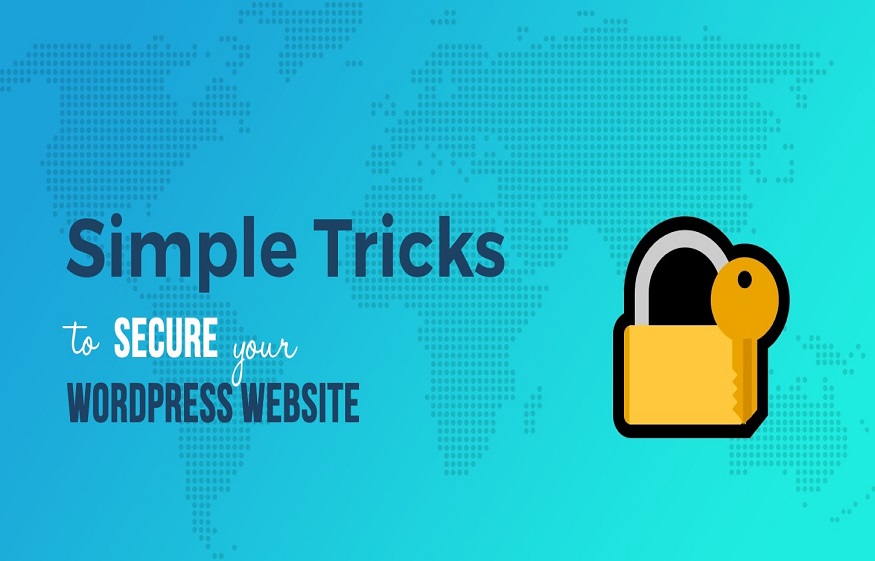With great power, comes great responsibility. Nothing rings truer than this adage for CMS platforms like WordPress that continue to grow in demand and popularity, making it a favored target for hackers and those wishing to illegitimately access your site’s content and manipulate it. As a WordPress site owner, what you need is a comprehensive list of security measures that ensure you’re doing your best to prevent such attacks and better protect your website.
Beefing up your login credentials
As long as there are articles about improving WordPress security on the Internet, this point will be the first and foremost security measure suggested and insisted upon. As the initial security barrier against attackers, close to 8% of attacks happen due to weak login information (looks small until it is compared with the total number of WordPress attacks). If you’d like to prevent the occurrence of brute force attacks, you need to first strengthen your username, followed by your password.
Gone are the days where it was fashionable (and easy) to maintain the same standard ‘admin’ username – while it still is easy, it is also common knowledge among hackers, so it is a far better and more economical decision to modify this. Also, if you’re installing WordPress on a new site, make it a priority to use a different username. If you have a pre-existing site with this admin name, create a new user account with full administrator rights and a different username before deleting the old user account. (Note: don’t forget to reassign content as well)
Strong passwords are equally important – you can either use ones that are generated by trusted sites like Norton Password Generator (automated generation may be problematic when faced with brute force attacks), or create a complex one of your own with special symbols and alphanumeric characters and store it safely. Ensure that your site visitors also make it a priority to input better login information using plugins suited for this purpose, like Force Strong Passwords.
-
Using a reliable hosting company
Inadequate security from the server-side causes close to 40% of attacks on WordPress sites. Choosing a reliable hosting provider that regularly updates their hosting infrastructure for known & unknown security issues should be your primary concern.
-
Monitor (and install) all updates
Your WordPress site functions securely to a major extent based on regular updates since these ensure that all security patches are installed to counter frequent and current threats, bug fixes, and additional layers of security for addressing known threats. Minor WordPress updates (you may be familiar with representations like 3.2.2) are equally important as they deal with loopholes and vulnerabilities that pop out unexpectedly. Usually, WordPress installs these minor updates automatically and you’re advised to leave them in this manner.
Here is the complete security guide for WordPress: https://www.getastra.com/blog/cms/wordpress-security/wordpress-security-guide/
Themes and Plugins
There are various safety concerns about extensions, themes, and plugins, especially those installed from third parties, as they account for approximately 20% of WordPress attacks. Always try to stick with WordPress directories or vetted and reliable sites with trustworthy sources (you can use plugins like Theme Check to ensure that they’re up to the latest development standards, which can be done directly from WordPress’ admin area also).
Limit yourself to ones that you absolutely need for the functioning of the site. Adding an untrusted plugin could be a burden to your security concerns, as they carry the potential for vulnerabilities and backdoors simply due to poor coding for hackers to make an entrance. Check ones that you need to be constantly active, and if there are ones that didn’t make the cut, re-evaluate if you need them at all. Pro tip: this also speeds up your WordPress site.
Keep everything up-to-date and be extra careful of any plugins that you haven’t updated for a long time period. If you’d like an easy method to speed up the process, and if it is supported by your themes), add these lines to your ‘wp-config.php’ to ensure automatic updates to all extensions and plugins;
add_filter( ‘auto_update_plugin’, ‘__return_true’ );
add_filter( ‘auto_update_theme’, ‘__return_true’ );
-
Regular backups
Hacked sites find their relief in reliable backups done at time periods with clean content and regularly conducted for the latest additions without too much worry. A lot of plugins like VaultPress, BackupBuddy, and Backup Creator are available for this purpose.
These seven steps are the primary steps that need to be taken to ensure WordPress security, but there are various others that you can take according to the kind of site and customizations you possess.
For example, you can limit login attempts, employing two-factor authentication, customize table prefixes, ensure correct file permissions to avoid unwanted access, block all access to the wp-config file, hide your WordPress version details to confuse hackers, disable the WordPress theme and plugin editor, among many others.
